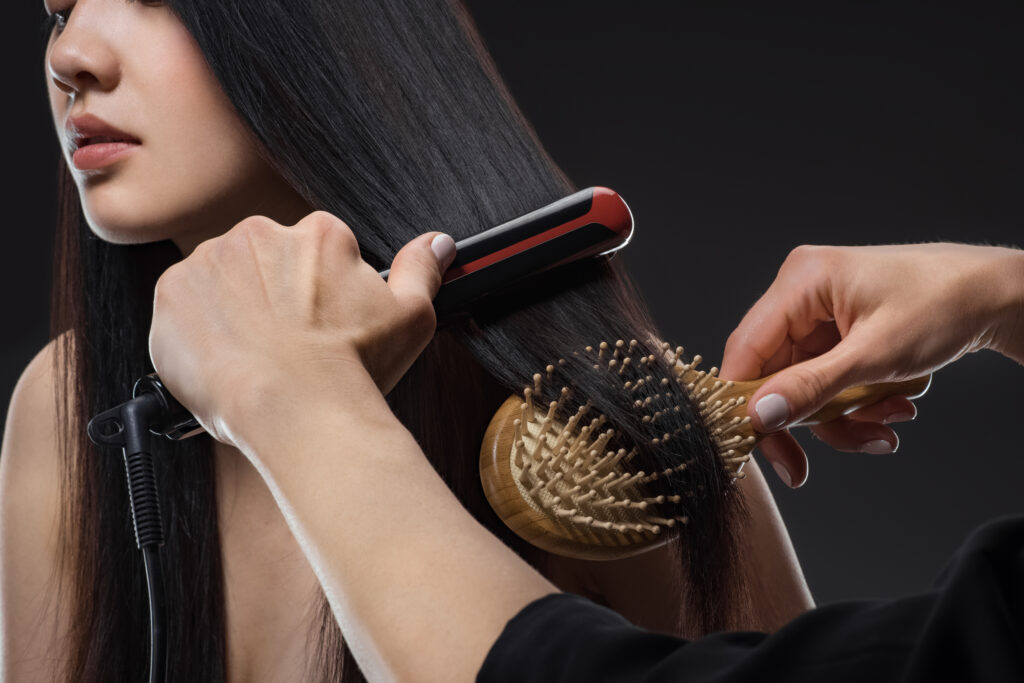
Hair brushes are more than just tools; they are essential companions in your daily hair care rituals at home.
From untangling knots with gentle precision to sculpting perfect styles, hair brushes play a crucial role in maintaining healthy and beautiful hair. They distribute natural oils evenly, enhance hair texture, and stimulate the scalp for improved circulation. Whether you’re aiming for smooth elegance or tousled waves, choosing the right brush can transform your styling experience, making it a vital investment in your personal grooming routine.
Hair Brushes Types
Before diving into the specifics of the different types of hair brushes, it’s essential to understand their crucial role in the hair care routines. Hair brushes are not just tools for styling; they are integral to maintaining the health and appearance of our hair. Each type of brush is designed with unique features to cater to various hair textures, lengths, and styling needs. From detangling knots and distributing natural oils to enhancing volume and creating defined curls, the right brush can make a significant difference in achieving your desired look.
Understanding the different types of hair brushes and their benefits will help you select the best tools for your hair care routine, ensuring optimal results and promoting healthier, more manageable hair.
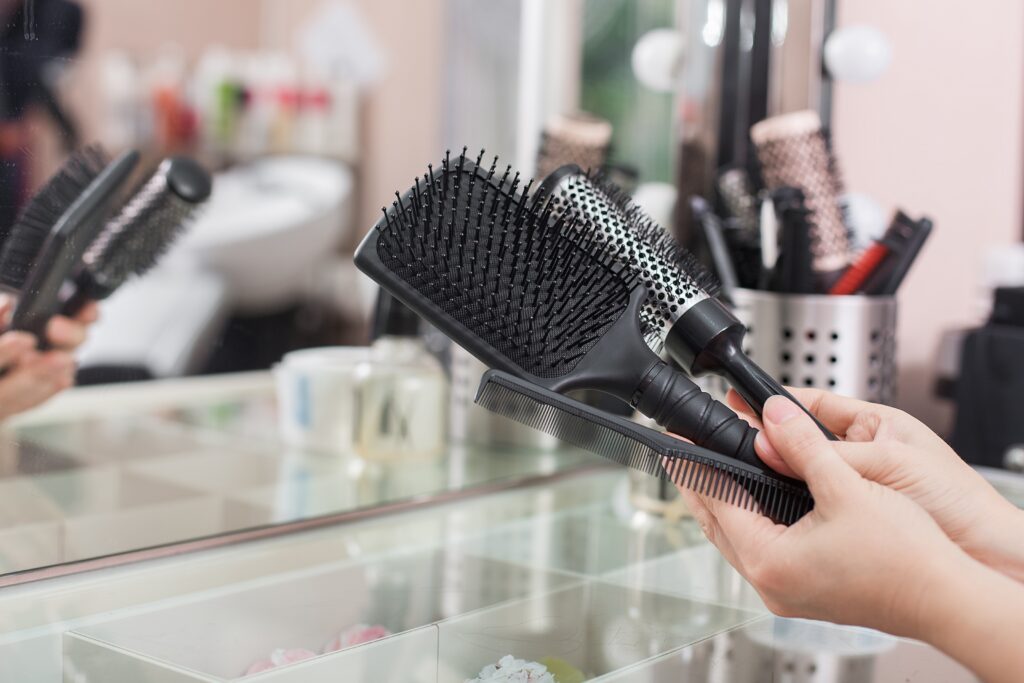
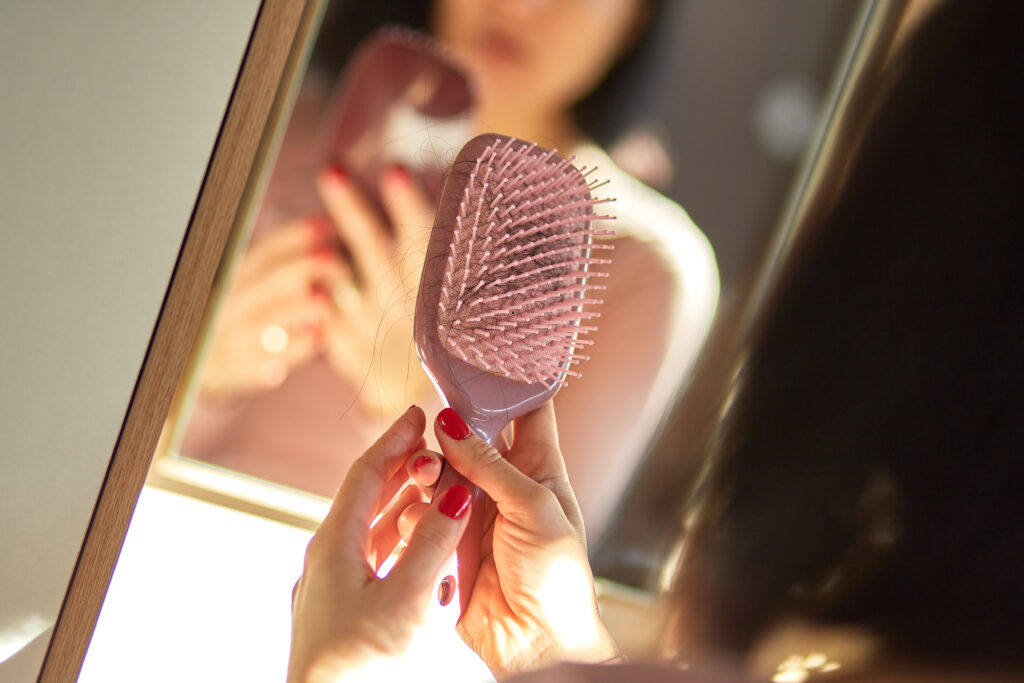
Paddle Brushes
Paddle brushes stand out due to their wide, flat base and densely packed bristles, which make them highly effective tools for managing long or thick hair. The broad surface area of paddle brushes facilitates the even distribution of natural oils from the scalp to the tips of the hair strands, which not only enhances shine but also helps reduce frizz. Additionally, the gentle pressure exerted by paddle brushes during use stimulates blood circulation in the scalp, promoting overall hair health and growth. Whether you’re aiming for sleek, straight styles or simply need to detangle stubborn knots without causing breakage, paddle brushes prove versatile and indispensable in daily grooming routines.
Round Brushes
Round brushes, available in various sizes, play a pivotal role in hairstyling by enabling the creation of volume, curls, or waves with precision and control. Their cylindrical shape and strategically placed bristles facilitate efficient manipulation of hair strands during blow-drying sessions. Smaller round brushes are perfect for adding lift and defining curls, whereas larger ones excel in achieving smooth, voluminous blowouts. Furthermore, round brushes aid in distributing heat evenly across the hair, thereby reducing the risk of heat damage during styling processes. Their versatility extends across different hair lengths and textures, offering flexibility in styling options ranging from casual to formal looks.
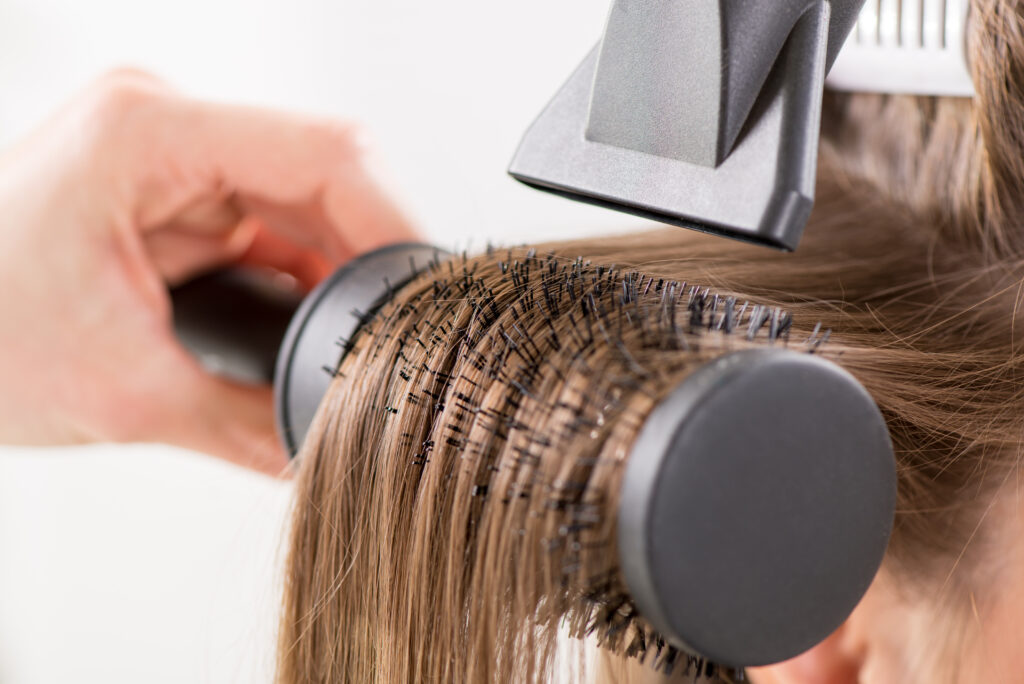
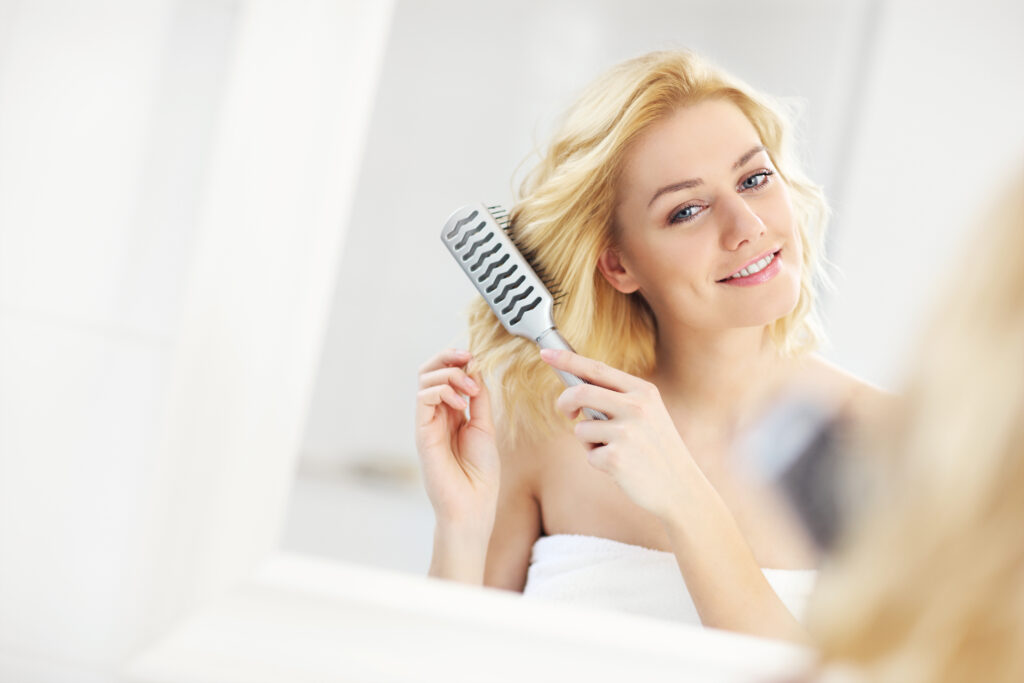
Vent Brushes
Vent brushes feature a distinctive design characterized by widely spaced bristles and a vented structure, facilitating optimal airflow during blow-drying. This unique construction significantly reduces drying time by allowing hot air to circulate freely through the brush, making them ideal for quick styling sessions. Their lightweight and ergonomic design enhance maneuverability, catering to all hair types, particularly those prone to frizz or excess moisture. Beyond drying, vent brushes serve as effective tools for gently detangling hair post-wash, minimizing breakage and static buildup. Their role in achieving smooth, sleek styles with minimal effort underscores their essential place in every hair care arsenal.
Boar Bristle Brushes
Boar bristle brushes are celebrated for their exceptional ability to distribute natural oils produced by the scalp throughout the hair strands. This natural distribution not only enhances hair texture but also imparts a noticeable shine. The soft yet sturdy bristles of boar bristle brushes effectively remove dirt, dust, and product residue from the hair while delicately stimulating the scalp. Suitable for daily use, these brushes are particularly advantageous for individuals with dry or damaged hair seeking to restore moisture balance and diminish frizz. By smoothing the hair cuticle layer, boar bristle brushes promote softer, more manageable hair with prolonged use, making them a preferred choice among those aiming for healthier hair maintenance.
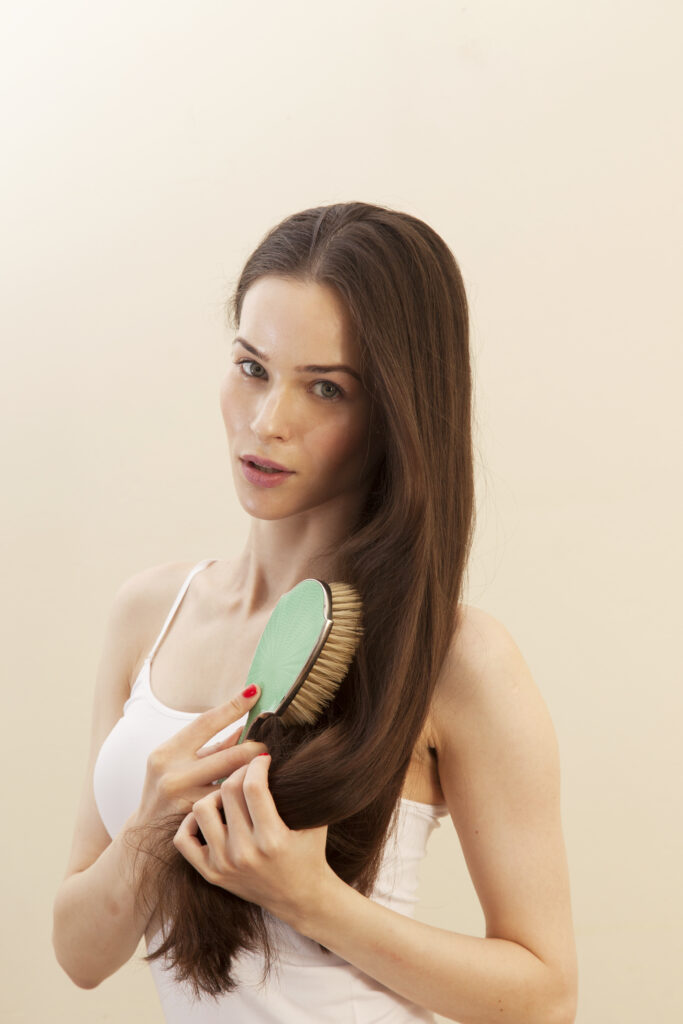
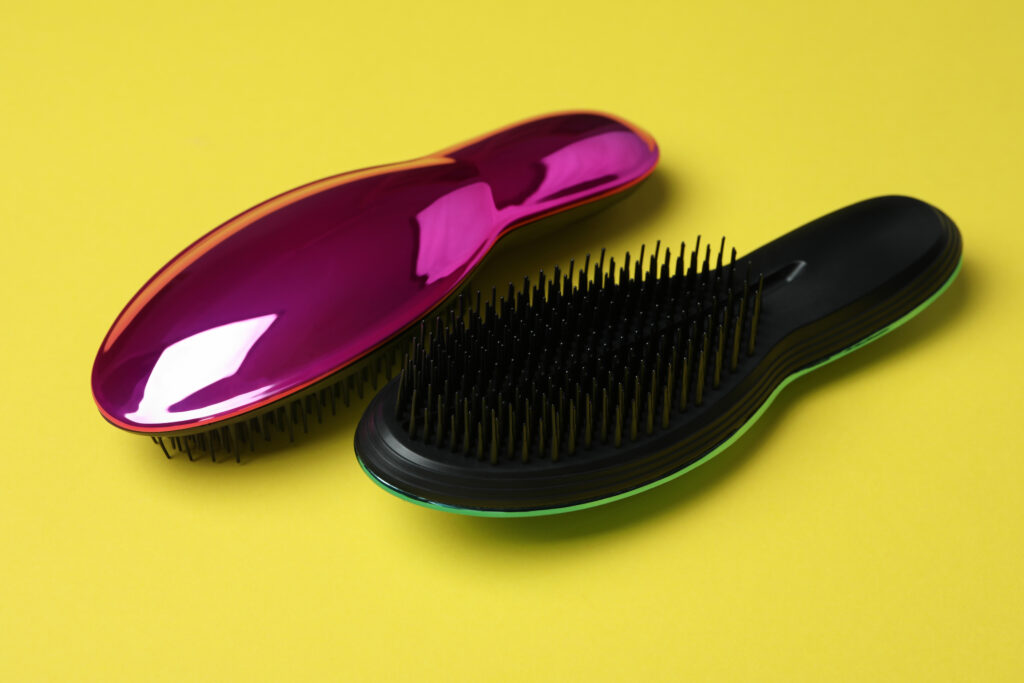
Detangling Brushes
Detangling brushes are specifically engineered to effortlessly glide through knots and tangles, minimizing hair breakage and discomfort during grooming sessions. Typically featuring flexible bristles or widely spaced teeth, these brushes delicately separate individual hair strands without tugging or causing damage. They cater to all hair types, including curly, thick, or fine hair prone to tangling, making them indispensable tools for post-shower detangling routines. By smoothing wet hair without stressing the hair shaft, detangling brushes aid in maintaining a smooth appearance and preventing knots throughout the day when used on dry hair. Their gentle yet effective design ensures stress-free detangling experiences, promoting overall hair health and manageability.
Choosing the Right Hair Brush
Choosing the right hair brush is crucial for achieving optimal results in your hair care routine. Start by considering your hair type:
- Fine hair: Opt for brushes with soft, flexible bristles to prevent breakage.
- Thick hair: Choose brushes with sturdy bristles that can penetrate dense hair without snagging.
- Curly hair: Use brushes with widely spaced bristles or a detangling brush to preserve natural curl patterns.
Next, factor in your hair length:
- Long hair: Use larger brushes like paddle brushes for effective detangling and styling.
- Short hair: Opt for smaller brushes for precision and control, such as round brushes for creating volume or defining curls.
Finally, align your brush choice with your styling preferences:
- Blow-drying: Choose vented brushes for quicker drying times and airflow control.
- Sleek styles: Paddle brushes are ideal for smoothing and reducing frizz.
- Curling or waving: Round brushes offer versatility for creating curls or waves during styling.
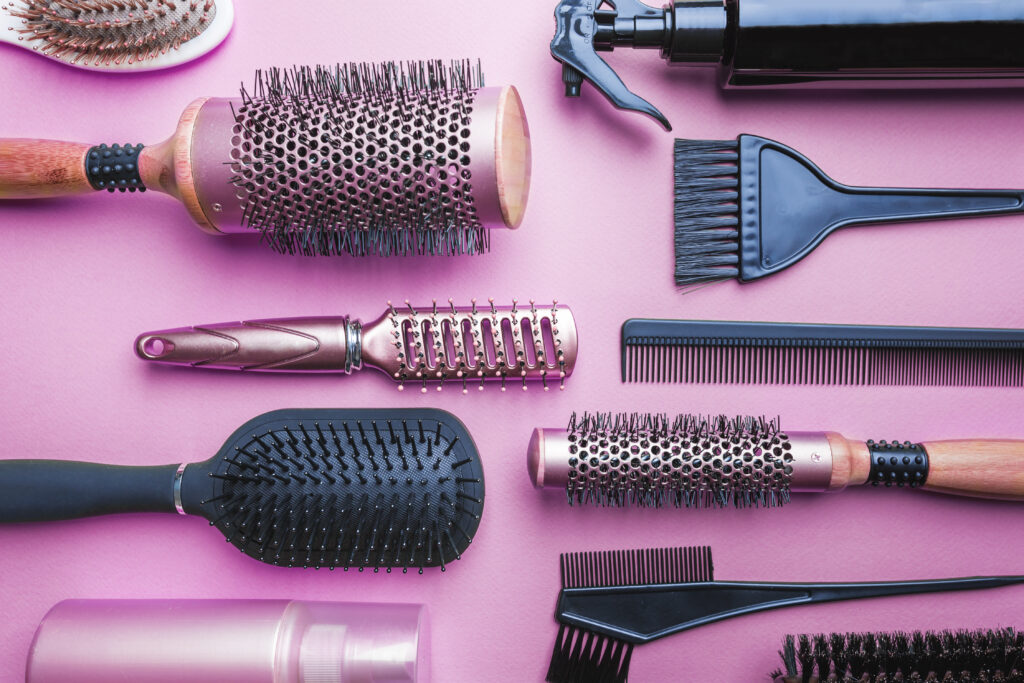
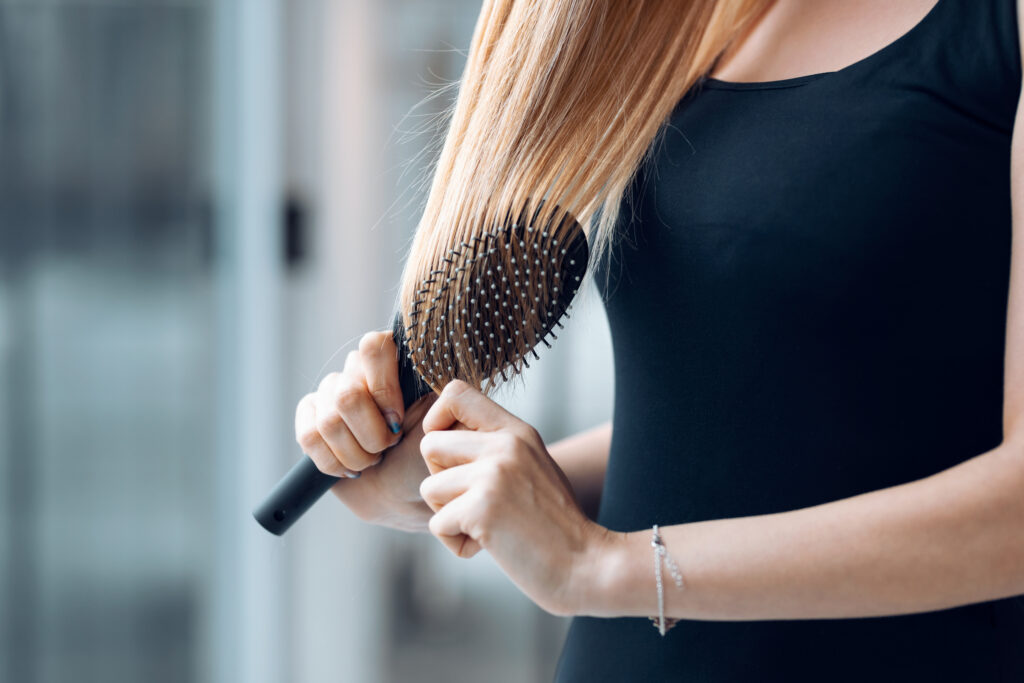
Features to Look For
When purchasing a hair brush for home use, consider the following key features to ensure it meets your needs:
- Handle Ergonomics: Look for brushes with ergonomic designs that provide a comfortable grip during prolonged use. A well-designed handle reduces strain on your hand and wrist, enhancing overall ease of styling.
- Bristle Material: Choose between natural and synthetic bristles based on your hair type and styling goals. Natural bristles, typically made from boar hair or similar materials, are gentle on the scalp and distribute natural oils for added shine. Synthetic bristles are often more durable and suitable for detangling thick or wet hair.
- Heat Resistance: If you use hot styling tools like hair dryers or straighteners, opt for brushes with heat-resistant bristles. This feature prevents bristles from melting or warping under high temperatures, ensuring longevity and safety during styling sessions.
Considering these features when selecting a hair brush ensures not only effective styling but also enhances comfort and protects your hair from damage.
Hair Brush Maintenance
To prolong the lifespan of your hair brushes and maintain their effectiveness, follow these essential maintenance tips:
- Cleaning Techniques:
- Regular Cleaning: Remove hair strands and debris from the brush after each use to prevent buildup.
- Washing: Use a mild shampoo or gentle cleanser to wash the bristles periodically. Avoid soaking wooden handles to prevent damage.
- Brush Cleaner: Use a brush cleaner tool or an old toothbrush to gently scrub between bristles and remove stubborn residue.
- Rinsing: Rinse thoroughly with lukewarm water to ensure all shampoo or cleanser is removed.
- Drying: Allow the brush to air dry completely before using it again.
- Proper Storage Methods:
- Store brushes with bristles facing upwards to maintain shape.
- Keep in a well-ventilated, dry area away from humidity and sunlight.
- Store different types of brushes separately to maintain hygiene and prevent damage.
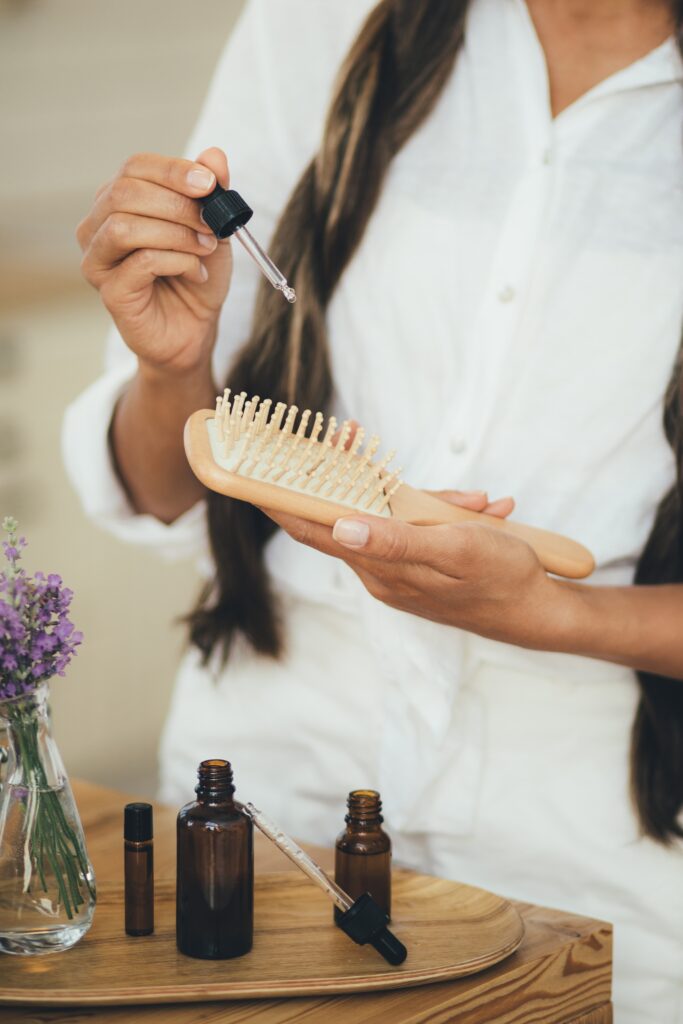
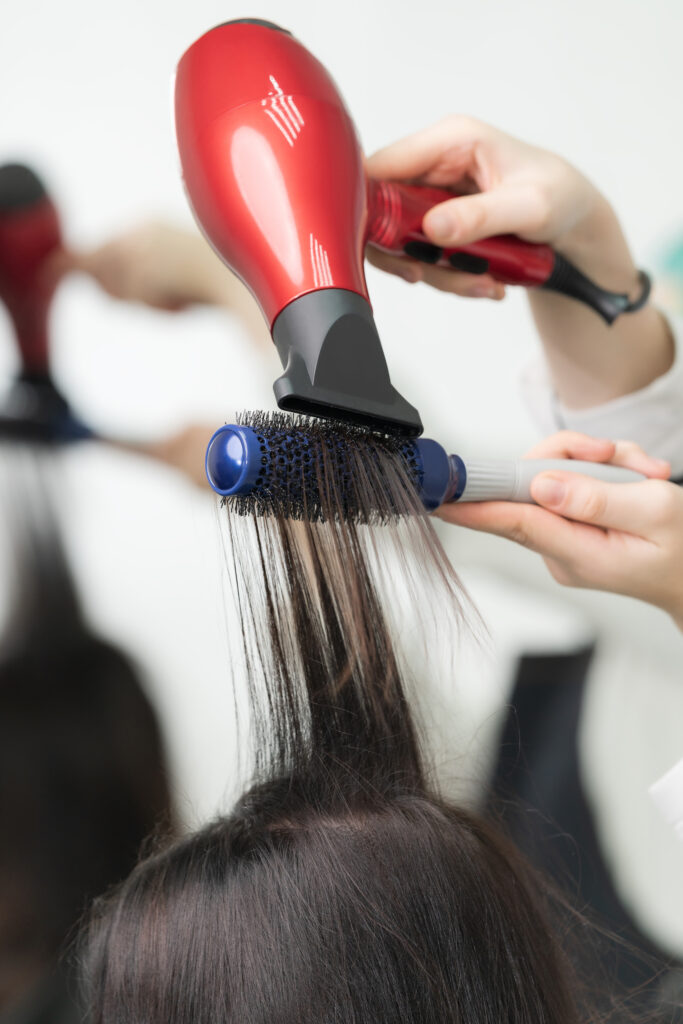
Styling Tips
When styling your hair, different types of brushes offer specific techniques for achieving various looks:
- Creating Volume with Round Brushes:
- Use a medium-sized round brush to lift hair at the roots while blow-drying.
- Wrap sections of hair around the brush and direct hot air from roots to ends for added volume.
- Roll the brush outward as you reach the ends to create natural-looking waves or curls.
- Smoothing Hair with Paddle Brushes:
- Start with clean, dry hair and apply a heat protectant spray if using heat styling tools.
- Brush hair in sections with a paddle brush, starting from the roots to smooth out any bumps or frizz.
- Use long, even strokes to distribute natural oils from the scalp to the ends, promoting a sleek finish.
- Defining Curls with Specific Brush Types:
- For naturally curly hair, use a wide-tooth comb or a specialized detangling brush to separate curls without disrupting their shape.
- Apply a curl-enhancing product and gently scrunch curls upward with your fingers or the brush to encourage definition.
- Alternatively, use a round brush with a smaller barrel to shape and define individual curls while blow-drying on a low heat setting.
By using these techniques with the appropriate brushes, you can achieve versatile styles from voluminous waves to smooth, sleek looks or defined curls, enhancing your overall hairstyling routine.
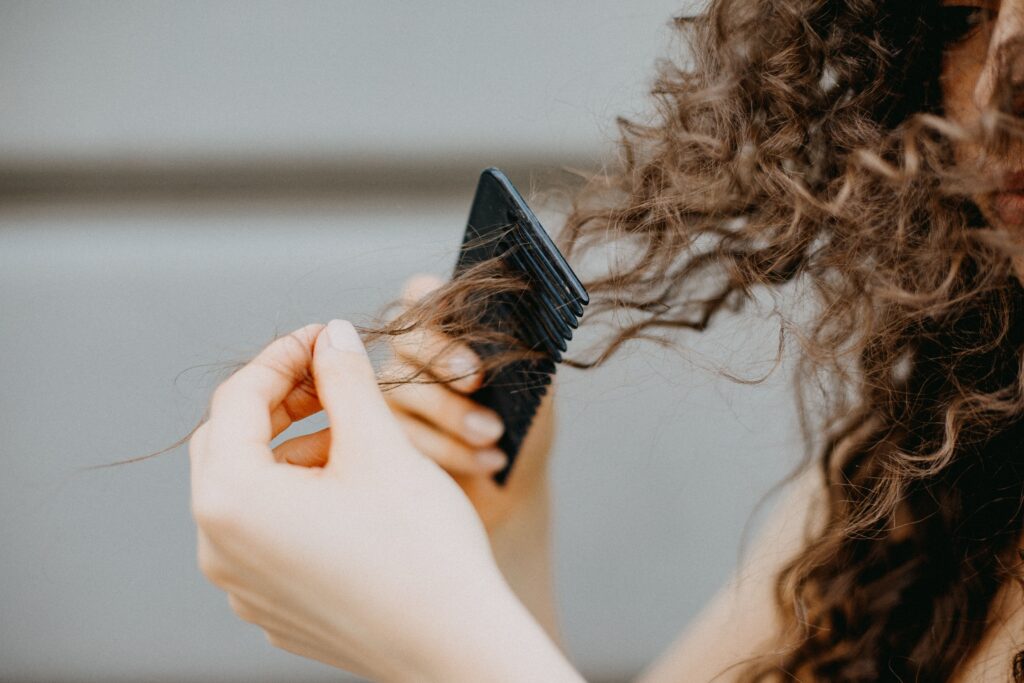
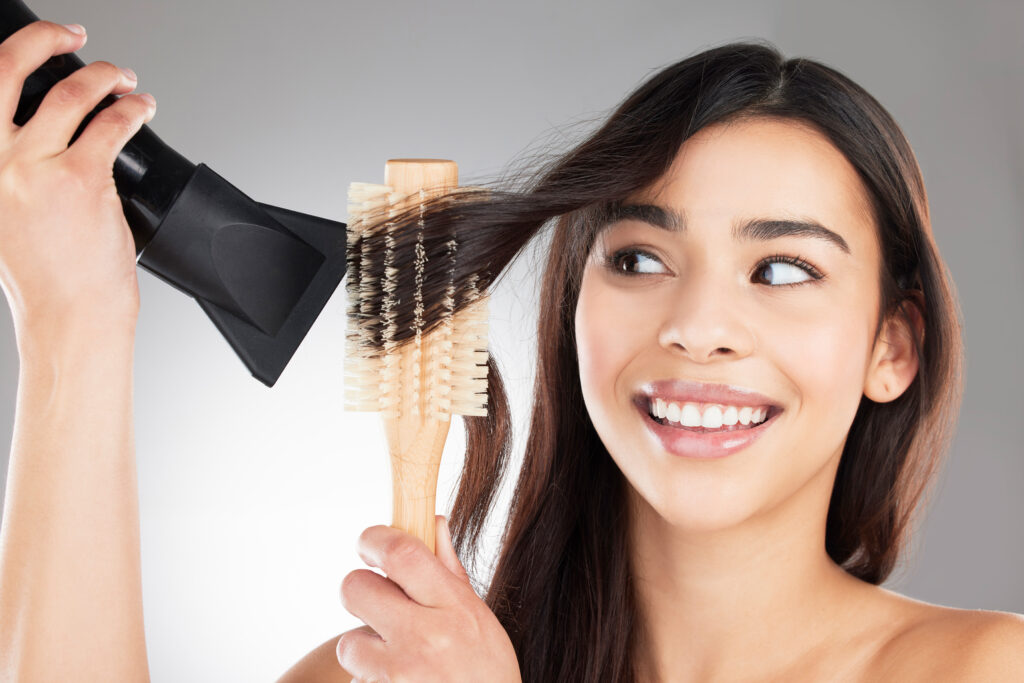
Common Mistakes to Avoid
Avoiding common mistakes when using hair brushes can significantly improve hair health and styling results:
- Brushing Wet Hair Improperly:
- Mistake: Brushing wet hair vigorously can lead to breakage and damage, especially when hair is most vulnerable.
- Correction: Use a wide-tooth comb or a specialized detangling brush on wet hair to gently remove knots, starting from the ends and working your way up to the roots.
- Over-Brushing Causing Damage:
- Mistake: Brushing hair excessively can weaken strands, leading to breakage and split ends.
- Correction: Limit brushing to a few times a day and use gentle strokes. Focus on detangling and styling rather than repeatedly brushing through hair.
- Using the Wrong Brush for Styling Goals:
- Mistake: Using a brush not suited to your hair type or styling needs can result in ineffective styling and potential damage.
- Correction: Choose brushes based on hair texture, length, and desired style. For example, use round brushes for adding volume or creating curls, and paddle brushes for smoothing and detangling.
Keep Your Hair Healthy at Home
- Wash your hair with a sulfate-free shampoo suitable for your hair type to avoid stripping natural oils. Rinse thoroughly with lukewarm water.
- Apply conditioner from mid-length to ends to keep hair hydrated and smooth. Leave it on for a few minutes before rinsing.
- Use a deep conditioning treatment or hair mask once a week to nourish and repair hair. Focus on areas prone to dryness or damage.
- Detangle wet hair gently with a wide-tooth comb or a detangling brush to prevent breakage. Start from the ends and work your way up to the roots.
- Minimize the use of hot tools like blow dryers, straighteners, and curling irons. When necessary, apply a heat protectant spray to shield hair from damage.
- Get regular trims every 6-8 weeks to remove split ends and maintain healthy hair growth.
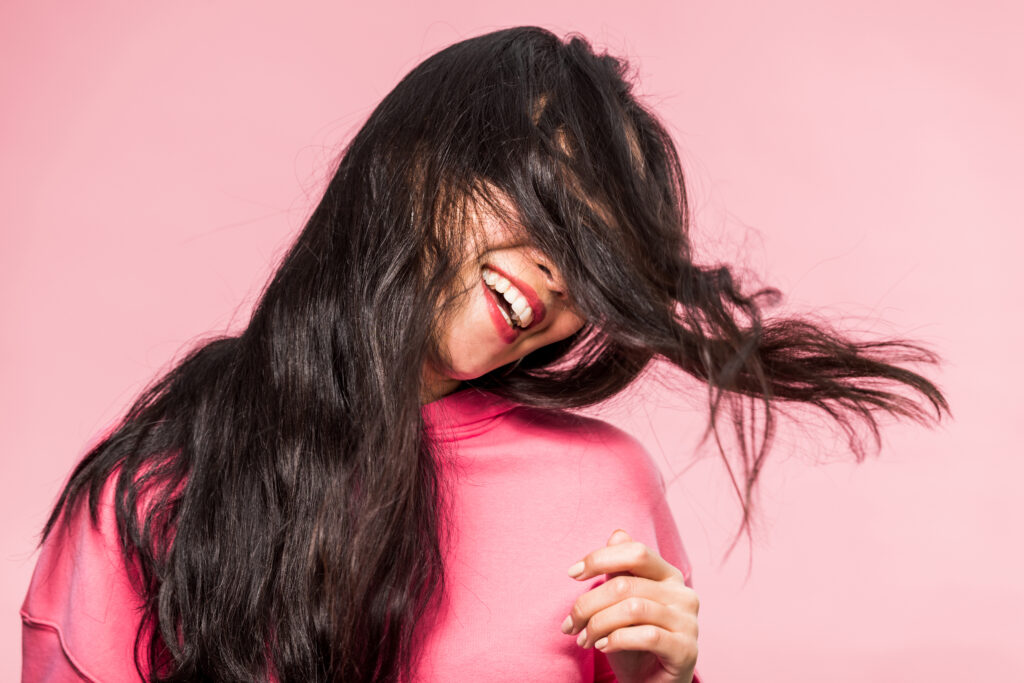
FAQ
Hair brushes come in various types such as paddle brushes (for detangling and smoothing), round brushes (for creating volume and curls), vent brushes (for quick drying and reducing frizz), boar bristle brushes (for distributing natural oils and enhancing shine), and detangling brushes (for gently removing knots without causing damage).
It’s recommended to clean your hair brush at least once a week to remove hair strands, dust, and product buildup. For brushes used with styling products, more frequent cleaning may be necessary to maintain optimal performance.
To create volume, use a round brush while blow-drying, lifting sections of hair at the roots and directing airflow downwards. For smoothness, use a paddle brush with long, even strokes from roots to ends, focusing on distributing natural oils and reducing frizz.
Static in hair can be reduced by using a brush with natural bristles or adding a small amount of hair serum or leave-in conditioner to the brush before use. Additionally, avoiding synthetic materials and ensuring your hair and brush are not overly dry can help minimize static.
You can buy high-quality hair brushes at a good price on the Swan Beauty website. They offer a wide range of brushes suitable for various hair types and styling needs, ensuring both quality and affordability.

